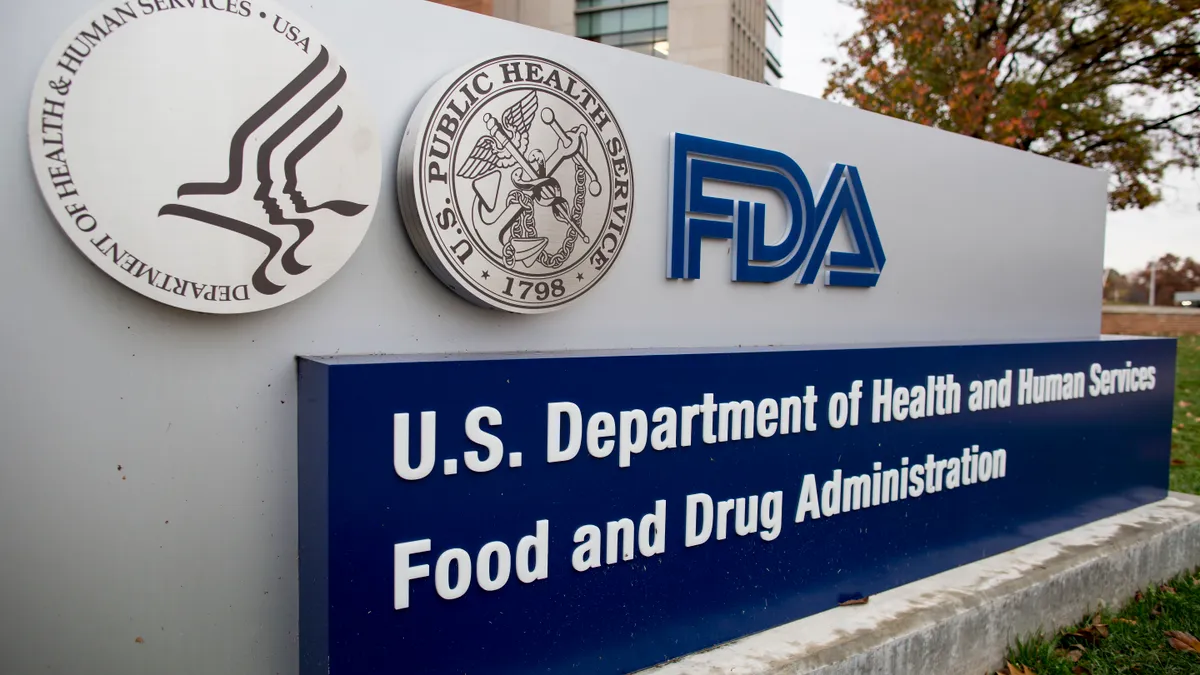Dive Brief:
-
Industry groups including AdvaMed are backing FDA plans to create streamlined good manufacturing practice (GMP) compliance mechanisms for combination products.
-
The FDA received broadly positive feedback on plans to exempt some combination products from device quality system regulation and otherwise streamline processes, although several commentators asked for greater clarity about certain points.
-
Medtech trade group AdvaMed is pushing the FDA to add a section on the annual stability expectations for combination products and clarify the rules on sampling before finalizing the text.
Dive Insight:
Combination products pose some specific challenges for regulators and manufacturers. In combining devices and medicines into a single treatment, these products bridge two sets of distinct rules. The products therefore need to fully comply with drug GMPs and device quality system regulations. The FDA has spent the past five years trying to create a system that ensures quality without stifling innovation.
The system established through 2015 FDA guidance is designed to simplify the regulation of plants that make drug-device combinations. Essentially, the FDA treats GMPs and quality system rules as largely equivalent, freeing companies from the need to apply two sets of overlapping requirements.
Though that streamlined GMP compliance, legislators felt the FDA could do better and used the 21st Century Cures Act to task it with identifying combination products and processes eligible for different approaches. In June, the FDA complied with the request by publishing a list of proposed mechanisms for complying with GMPs and quality system requirements. With the comment period now closed, the FDA has shared the feedback it received on the ideas.
Trade groups representing developers of devices, branded pharmaceuticals and off-patent drugs all voiced broad support for the proposals. None of the trade groups identified major failings with the proposals or warned they will cause serious harm to the industry if implemented as written in the FDA draft.
Respondents to the consultation see some scope for improvement, though. AdvaMed, for example, made four suggestions. The medtech trade group wants the FDA to allow companies to monitor the stability of combination products after approval to comply with GMPs. While the FDA’s draft lacks a discussion of such a mechanism, AdvaMed’s approach is in line with those advocated by the agency in other guidance documents.
“The stability program should monitor the combination product over its shelf life and determine that it remains, and will remain, within specifications under labeled storage conditions. The protocol for the stability program can differ from initial long-term stability studies in the marketing authorization dossier if this is justified and documented in the protocol,” AdvaMed wrote in its feedback.
AdvaMed also wants the FDA to clarify what it means when it states manufacturers can test product samples, not finished combination products, provided production processes “do not affect the drug constituent part.” The trade group interprets this as meaning companies can test samples provided differences in how the finished product is made don't cause it to fail to meet specifications.
Branded trade group PhRMA and off-patent drug body the Association for Accessible Medicines commented on the draft proposals, too. The drug-focused groups made different points than AdvaMed, highlighting the need for greater clarity on complying with device system quality requirements, but were similarly positive about the document as a whole.











